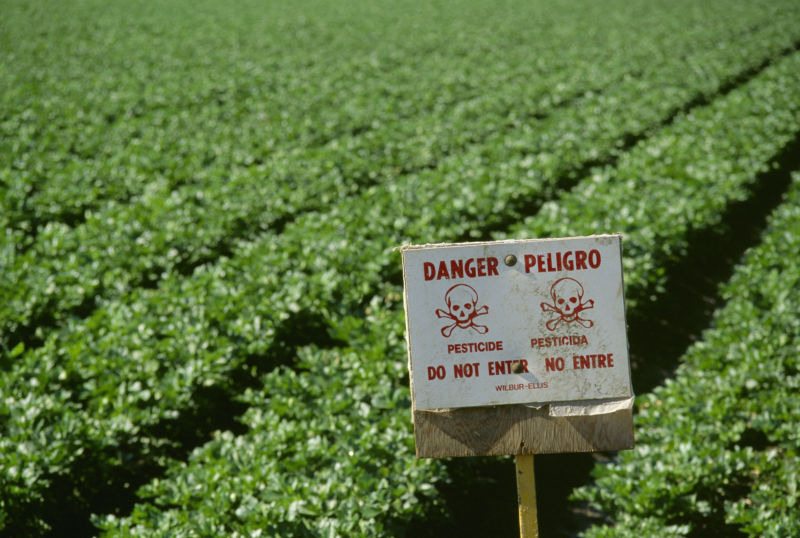From Guest Blogger Emily Folk: Why Agriculture Can Be Hugely Influential In Energy Transformation

Agriculture – Warning sign posted in celery field
While farming and agriculture do provide benefits to the environment through the production of healthy crops, there is a more negative impact too. Through the use of heavy machinery and fuel-powered equipment, it also contributes significantly to environmental problems via emissions and the like. A great deal of energy is necessary to keep equipment operational even off the field.
That helps to explain why agriculture in America is responsible for about 14% of total greenhouse gas emissions. That is also precisely why agriculture can be hugely influential in eco-friendly improvements and the general transformation of the energy industry.
Agriculture’s Dependence on Fossil Fuels
During a time when most industries are engaging in a green transformation, agriculture and food production seem to be doing the exact opposite. Processes are heavily reliant on fossil fuels and the equipment that burns it. From planting, feeding, harvesting and distribution to the construction and repair of equipment, fossil fuels play a huge role. It’s why agriculture is one of the most significant contributors to greenhouse gases.
Furthermore, lengthening supply chains stretches the use of fossil fuels and dependence even more. Beyond the farm machinery, processing facilities and transportation also rely on conventional fuels.
What’s ironic is that the entire food and agriculture industry is at risk from global warming, which is directly caused by greenhouse gases. The effect on the atmosphere creates unpredictable climate and weather changes — not good for the growth of food and plants.
Many even attribute the social degradation and erosion of local communities around the world to industrial agriculture and its growth. Globalization and corporate control are at the helm of that impact, with cheap energy providing the boost to extend its reach. It also effectively reduces labor through machinery and automated systems.
Combine all that with the fact that many of the systems using the fuel are wholly inefficient — including farm machinery — and you have a recipe for disaster. At the very least, there’s an excessive use of fossil fuels and an exponentially growing environmental impact.
It needs to change, and it needs to happen soon.
Where Do We Go From Here?
Most operations cannot afford to stop what they’re doing immediately and begin making changes. Instead, the transformation will be gradual, achieved through minor changes over an extended period.
The most crucial element is that the industry as a whole is working toward continual improvement. Once that happens at a macro level, there will be no way to ignore the influence on today’s environment.
Here are some ideas for processes that can be improved:
- Equipment upgrades: Not only does newer and more advanced machinery tend to work more efficiently, but it also makes better use of resources like fuel. That’s before including the point that many new machines are electric, as opposed to gas-powered. Electric vehicles do still rely on conventional energy, but during operation, they don’t contribute to greenhouse gas emissions because they’re not burning fuel. Legacy equipment should be replaced as soon as possible.
- Soil conservation: The constant cycle of growing, harvesting and reseeding puts a strain on soil. Not only does it damage the earth itself, but erosion is a huge factor during processes like tillage. To better protect the land and topsoil, healthy cultivation and conservation practices should be used. It has the added benefit of improving the health of the soil, meaning less work between each harvest to get it ready, and less reliance on heavy machinery.
- Renewable and green energy: As opposed to using conventional fossil fuels, operations can integrate renewable energy sources like solar, wind and even geothermal. In most cases, the complete energy needs of a farm can be sustained by a substantial solar array.
- Crop rotation: Large crops like corn and wheat pull nitrogen out of the soil as they grow. At the end of each harvest, farmers replace it by adding fertilizer. Unfortunately, it’s also a product of natural gas, itself another form of fossil fuel. Crop rotation eliminates the need to use such fertilizers because fields are alternated accordingly. In the off-season, plants are grown to regenerate and renew the nitrogen — instead of depleting it.
Of course, the final goal would be to reduce dependence on fossil fuels altogether by deploying alternative means, whether that includes using electric machinery or installing renewable energy on-site.
The supply chain could also stand to see some major improvements, particularly when it comes to the handling, distribution and transportation of agricultural goods. There are more eco-friendly options for storing and moving products around rather than fossil fuel-powered vehicles and systems. Luckily, many organizations have either already swapped or are working on implementing green initiatives to make agriculture more environmentally friendly.
